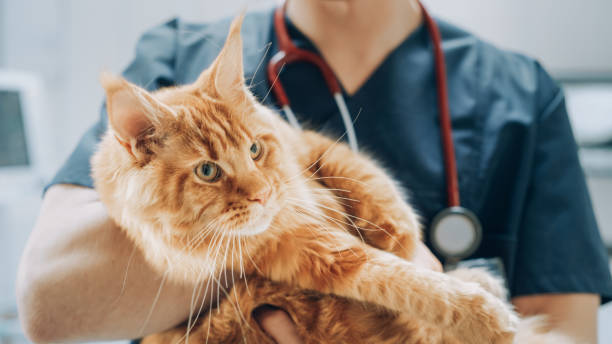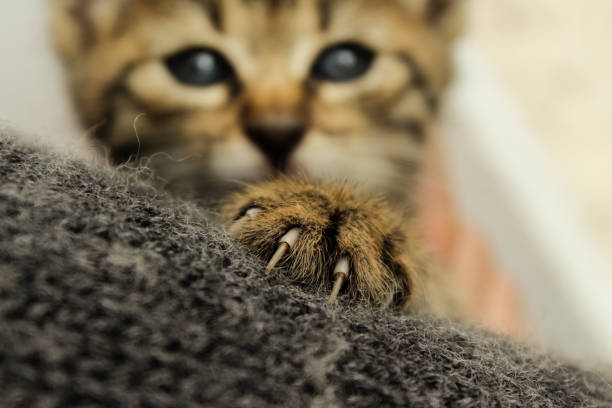
Why Your Cat Won’t Drink Water—And How to Help
Cats’ aversion to ingesting water may be baffling, however expertise their biology, instincts, and choices is prime to fixing the problem. Dehydration in cats is a silent danger that could lead to urinary crystals, kidney failure, or even demise if left unchecked. Let’s explore the motives in the back of this behavior and actionable techniques to keep your cat hydrated.
Table of Contents
Natural Instincts: The Desert Legacy
The Science Behind It
Cats advanced from ancestors in arid environments (like the African wildcat), where standing water became scarce. Their survival relied on extracting moisture from prey (e.G., rodents, birds), which can be roughly 70% water. Domestic cats preserve this low thirst drive, making them liable to dehydration when fed dry kibble (handiest 6–10% moisture).
Why It Matters
Cats on dry-meals diets must compensate via consuming greater water, but their instincts often fail to kick in. Chronic dehydration strains their kidneys, which might be already inefficient at concentrating urine as compared to other animals.
Solutions
Transition to Wet Food: Gradually update kibble with incredible moist meals (pâté, stews, or uncooked diets). Start by means of blending 25% moist meals with 75% dry, increasing the ratio over per week.
Hydration “Toppers”: Add warm water, bone broth (no onions/garlic), or goat milk (lactose-unfastened) to food.
Prey-Style Hydration: Offer small pieces of cooked bird or fish in water as a “soup” to imitate natural prey.
The Water Bowl: A Design Flaw

Why Cats Hate Their Bowls
Whisker Fatigue: Narrow or deep bowls press on a cat’s touchy whiskers, causing pressure. This is why cats can also paw at water or knock bowls over.
Stagnant Water Instinct: In the wild, stagnant water harbors micro organism. Cats opt for fresh, flowing sources.
Location Anxiety: Bowls positioned near loud home equipment (e.G., washing machines) or clutter boxes feel hazardous.
Solutions
Choose the Right Bowl:
Material: Ceramic or chrome steel (non-porous, scent-resistant). Avoid plastic, that can reason pussycat acne.
Shape: Wide, shallow dishes (e.G., pasta bowls or pet-particular “whisker-friendly” bowls).
Strategic Placement:
Set up a couple of stations in quiet, low-visitors regions (e.G., a windowsill, hallway, or cat tree).
Keep water bowls at least 3 ft faraway from meals and muddle containers. Cats instinctively keep away from “contaminating” their water with food smells.
Running Water: The Faucet Obsession

Why Moving Water Appeals
Cats are hardwired to seek flowing water, which is fresher and more secure in the wild. The sound and motion additionally interact their interest.
Solutions
Cat Water Fountains:
- Opt for quiet, ceramic, or stainless-steel models (e.G., Pioneer Pet Raindrop or Catit Flower Fountain).
- Place the fountain faraway from walls to let cats approach from all aspects.
DIY Alternatives:
- Leave a faucet dripping (if water conservation isn’t a concern).
- Create a “water wall” by means of propping a bowl beneath a slow circulate from a glass.
Hidden Health Issues

Medical Red Flags
A surprising disinterest in water should indicate:
Dental Disease: Broken enamel, gingivitis, or oral tumors make consuming painful.
Kidney Disease: Older cats are at risk of persistent kidney sickness (CKD), which increases thirst however may reason nausea or weak point.
Diabetes or Hyperthyroidism: These situations alter thirst cycles.
Solutions
Vet Checkups: Annual bloodwork and urinalysis for cats over 7 can trap early kidney problems.
Hydration Therapy:
Subcutaneous fluids (administered at domestic for CKD cats).
Prescription hydration diets (e.G., Royal Canin Renal or Purina Hydra Care).
Pain Management: Dental cleanings or extractions if mouth ache is the perpetrator.
Temperature, Texture, and Taste

Cats Have Preferences!
Cold Water: Some cats love ice cubes or chilled water.
Flavored Water: A trace of taste can lure choosy drinkers.
Texture Issues: Bubbles from a fountain or a glass bowl’s readability may also attraction to them.
Solutions

Flavor Boosters:
Freeze low-sodium fowl broth into ice cubes.
Add a teaspoon of tuna juice (from water-packed cans) to their bowl.
Experiment with Temperatures: Offer room-temperature and chilled water in separate bowls to check desire.
Glass Bowls: The transparency we could cats see the water level, lowering uncertainty.
Behavioral and Environmental Factors

Stress and Routine Changes
Cats are creatures of addiction. Moving houses, new pets, or maybe rearranged furniture can stress them into avoiding water.
Solutions
Stress Reduction:
Use Feliway diffusers to calm anxiety.
Maintain a steady feeding and cleaning schedule.
Positive Reinforcement:
Reward your cat with treats or praise after they drink.
Place treats close to water bowls to create wonderful institutions.
Monitoring Hydration: Know the Signs

How to Check for Dehydration
Skin Tent Test: Gently pinch the skin between the shoulder blades. If it doesn’t snap again within 1–2 seconds, your cat is dehydrated.
Gum Check: Dry, sticky gums imply dehydration. Healthy gums are pink and wet.
Litter Box Clues: Small, difficult stools or infrequent urination sign hassle.
Daily Water Intake Goal
Cats want roughly 1 ounce of water consistent with pound of frame weight each day. For example, a 10-pound cat need to drink approximately 10 oz. (1.25 cups) in step with day, together with moisture from food.
Track Their Habits:
Measure water in bowls with a measuring cup every morning and word how much is long gone by nighttime.
Use a clever water fountain with a quantity tracker (e.G., Petkit Eversweet 2).
Creative Hydration Hacks

Ice Cube Play: Freeze broth or cat-secure natural tea (e.G., catnip) into cubes for a fun, hydrating toy.
Wet Food “Popsicles”: Blend moist food with water and freeze in silicone molds for a summer deal with.
Multiple Water Stations: Place bowls on each ground, near favorite nap spots, or even in bathtubs (for privacy-seeking cats).
When to Rush to the Vet

Seek immediately help if your cat indicates:
Severe Dehydration: Sunken eyes, lethargy, panting, or refusal to devour.
Straining to Urinate: A blocked urethra (not unusual in males) is life-threatening.
Sudden Weight Loss or Vomiting: Could indicate kidney failure or diabetes.
Final Thoughts
Cats may by no means drink as eagerly as puppies, but with endurance and creativity, you may work with their instincts—no longer in opposition to them. Prioritize wet food, invest in a fountain, and monitor their fitness closely. Remember, a hydrated cat is a more fit, happier cat!
Pro Tip: Still caught? Try a “water flavor take a look at” by way of providing bottled spring water, filtered water, and faucet water in separate bowls. Some cats are choosy about mineral content material!
By addressing your cat’s specific needs, you’ll turn hydration from a project into a continuing a part of their ordinary.



2 thoughts on “Why Your Cat Won’t Drink Water—And How to Help”